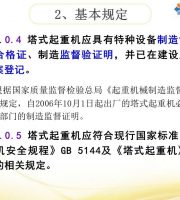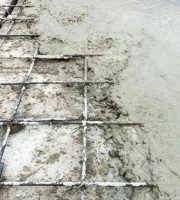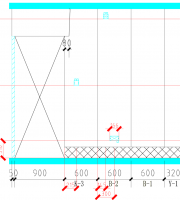3、 The terms “should” and “should not” in the specification for the dispute over the position of reinforcement joints are not mandatory requirements.
Generally, the acceptance of structures according to the second level standard is sufficient.
The quality of mechanical joints and welded joints is not easy to control.
Grade III joint: the ultimate tensile strength of the connector shall not be less than 1.25 times the standard value of the yield strength of the connected reinforcement, with small residual deformation and certain ductility and repeated tension and compression performance.
At present, binding connection and straight thread sleeve connection are commonly used in construction sites.
The Code for Design of Concrete Structures (GB50010-2010 (2015) has restrictions on the use of binding joints and welded joints.
These are theoretical requirements, and the use of “should” indicates that it is not compulsory.
The sleeve is graded according to the mechanical performance of the joint, which is conducive to the reasonable selection of joint grade in different application scenarios such as the importance of the structure, the position of the joint in the structure, and the percentage of the joint area.
This is the general principle for the location of reinforcement joints.
Neither the “Code” nor the “Technical Specification for Mechanical Connection of Reinforcement” (JGJ107-2016) (hereinafter referred to as the “Specification”) has any mandatory provisions on the location of reinforcement joints.
In Section 7.0.8 of the “Specification”, samples shall be taken from the closed ring reinforcement joint, reinforcement cage joint, embedded sleeve joint of diaphragm wall, and stainless steel reinforcement joint, and the reinforcement test pieces shall be randomly cut from the processed and inspected finished reinforcement head products.
Grade II joint: the ultimate tensile strength of the connector shall not be less than the standard value of the ultimate tensile strength of the connected reinforcement, with small residual deformation and high ductility and repeated tension and compression performance.
2、 No matter what type of reinforcement joint is used, the reinforcement joint shall be set in accordance with 8.4.1 of Code for Design of Concrete Structures (GB50010-2010) (hereinafter referred to as the “Code”): the connection joint of load-bearing reinforcement in concrete structures shall be set at the place with less stress.
Even if the joint quality is qualified, it is not as good as the original reinforcement itself.
4、 According to Article 3.0.4 of the “Specification”, the reinforcement joint grade shall be divided into three grades: Grade I, Grade II and Grade III according to the ultimate tensile strength, residual deformation, total elongation under maximum force, and repeated tension and compression performance under high stress and large deformation.
Why are there so many strict restrictions on the location of reinforcement joints? Because the joint is ultimately a weak point, the force transfer performance (strength, deformation, restoring force, failure state, etc.) of the reinforcement joint is not as good as that of the whole reinforcement directly transmitting force, and any form of reinforcement connection will weaken its force transfer performance.
If it is really unavoidable, it is OK.
Therefore, the specification limits the location, number and percentage of joints.
Unless there are special seismic requirements or structures bearing dynamic loads, the acceptance can be conducted as the first level joint..
Theoretically, as long as the joint quality is qualified, it can be placed at any position, and it can not be unqualified at any position.
Article 8.4.9 For components requiring fatigue checking, the longitudinal tensile reinforcement shall not adopt binding lap joint or welded joint.
Due to the importance of force transmission of tensile reinforcement at the place with maximum force, the joint should be set at the place with less force.
However, the quality of the binding joint is better controlled, as long as it is not less than the specified overlapping length.
If it means that there is no choice, the words “must” and “forbidden” shall be used.
There should be fewer joints on the same load-bearing reinforcement.
However, during the actual construction, some construction or supervision personnel who are honest or have only a little knowledge of the rules and regulations are stuck with, dogmatically understand the rules and wrongly interpret the rules and regulations.
At the same time, the joints should avoid the key stress parts, such as the stirrup densification area at the column end and beam end of the anti-seismic structure.
In the important components and key force transmission parts of the structure, the longitudinal load-bearing reinforcement should not be set with connection joints.
The maximum and minimum force is determined according to the bending moment in the bending moment envelope diagram of the member.
The joint cannot be located at the place where the stress is maximum.
Now your sleeve joint is at the place where the stress is maximum.
For Grade I joint, the ultimate tensile strength of the connector is greater than or equal to 1.10 times of the standard value of the tensile strength of the connected reinforcement, with small residual deformation and high ductility and repeated tension and compression performance.
Binding connection is used for small size reinforcement, generally for reinforcement with a diameter of less than 16, and sleeve connection is used for reinforcement with a diameter of more than 16 (inclusive).
Generally speaking, sleeve connection has better connection performance than binding connection and welding connection.
This is flexible in implementation and is easy to cause differences, disputes and wrangling.
No matter how good the quality of the joint reinforcement sleeve is, it is impossible to improve the strength of the base metal of the reinforcement, so the qualification of the joint is based on the qualification of the reinforcement.
It is allowed to have a little choice, either this way or not, and should be done first when conditions permit.
If necessary, such joints can be used in any part of the structure except the stirrup densification area at the beam end and column end of the frame with seismic fortification requirements, and the joint percentage is not limited.
Sleeve joint is a connection mode in which the force of one rebar is transmitted to another rebar through the mechanical engagement of rebar and connector.
The failure of sleeve connector includes: sleeve pulling off, sleeve longitudinal cracking, reinforcement pulling out of sleeve, etc.
The highest quality grade is Grade I joint.
1、 Rebar joint forms Rebar joint forms include: binding connection, welding connection, mechanical connection; Mechanical connection is also divided into: straight thread, taper thread, sleeve extrusion, sleeve grouting, etc.
Through the test, the fatigue performance of the rib stripped rolling straight thread joint is the best.
According to GB50010-2010 (2015) Code for Design of Concrete Structures, the longitudinal load-bearing reinforcement of axial tension and small eccentric tension members in 8.4.2 shall not be bound and overlapped; When the reinforcement in other components is bound and lapped, the diameter of the tensile reinforcement should not be greater than 25 mm, and the diameter of the compression reinforcement should not be greater than 28 mm.
If the joint can not reach the first level, it will be reduced to the second level for use and acceptance.
How can this be done? Rework it quickly, Yunyun.



